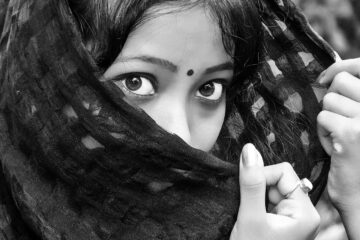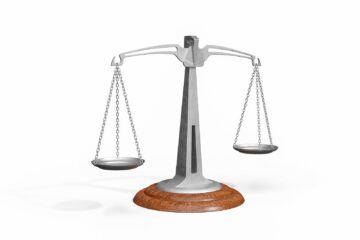![]()
In India, the reservation is treated as a tool of social transformation for the purpose of bringing change in the present social order by providing representation to the disadvantaged section of the society. After India’s independence in 1947, there were some major initiatives in favor of the Scheduled Tribes (STs), Scheduled Castes (SCs) that were aimed at their social upliftment. A common form of caste discrimination in India was the practice of untouchability.
The SCs were the primary targets of the practice, which was outlawed by the Constitution of India. The Preamble of our Constitution proclaims the resolution of PEOPLE OF INDIA to constitute India into a SOVEREIGN, SOCIALIST, SECULAR AND DEMOCRATIC REPUBLIC and to secure to all its citizen’s JUSTICE, social, economic and political; LIBERTY of thought, expression, belief, faith and worship; EQUALITY of status and opportunity; and to promote among them all FRATERNITY assuring the dignity of the individual and the unity and integrity of the Nation. The word ‘social justice’ in the Preamble implies recognition of greater good to a larger number without deprivation of legal rights of anybody.
The rationale behind reservation arose from the prerogative of Article 14 of the Constitution which provides for the ‘equality before the law’ and ‘equal protection of laws’. The expression ‘equal protection of laws’ ensures equality among unequal. The reservation policies are created keeping in view of ‘like to be treated alike’ as the uniform treatment of unequals is the same as unequal treatment given to equals.
Reservation is an act of withholding certain things for being enjoyed by the particular person or community and no other person or community has the right to enjoy the reserved thing. The reason for incorporating the provision of reservation in the Constitution of India was to promote social justice i.e. there shall be no discrimination against any person on grounds of backwardness and equal opportunity shall be provided to every person. The constitution framers never intended to include the provisions of reservation for the elimination of poverty. Reservation system or quota in the context of the Indian education system basically means that a set percentage of seats will be reserved in all universities and colleges for students who belong to socially and educationally backward categories or belong to different castes such as SC, ST and OBC (Other Backward Class).
Original Constitution of India under Article 334 had provided reservation only for quota in legislatures, that too only for 10 years until 1960. Subsequent amendments to the Constitution extended the period of reservation for quota in legislatures. Provisions of reservations in Educational Institutions under Article 15(4) was too created by means of Constitutional amendments later. No time period is given for the validity of the reservations mentioned in Article 15(4). The initial reservations were only for SC and ST.
Till 2003 reservations were made by governments in private educational institutions. But in 2003 Honorable Supreme Court in T. M. Pai Foundation vs. Union of India held that the state cannot make the reservation of seats in admission in privately run educational institutions. This position was reiterated by the Court in 2005 in P. A. Inamdar vs. State of Maharashtra. To overturn these decisions, Parliament in 2005 added Clause (5) in Article 15 by the 93rd amendment which enabled the states to make any special provision, by law, for the advancement of any socially and educationally backward classes of citizens or the SCs or the STs in so far as such special provisions related to their admission to educational institutions. The validity of this amendment was upheld by the Honorable Supreme Court in Ashok Kumar Thakur vs. Union of India case.
In January 2019, the 103rd Constitutional Amendment was carried out and brought into force under which Article 15(6) was added to provide reservations to economically weaker sections for admission to educational institutions including private educational institutions, whether aided or unaided by the State, other than the minority educational institutions referred to in Clause (1) of Article 30. The amendment aims to provide reservations to those who do not fall in 15(4) and 15(5) (effectively SCs, STs, and OBCs). By the 103rd amendment, states were enabled to make reservations for the economically weaker section of the society.
This reservation will be an additional 10% to the existing reservations i.e. 50% (as stated by the Honorable Supreme Court in ‘MANDAL’ case of 1992) + 10% = 60% of the total seats. Several writ petitions have challenged the constitutionality of the Constitution (103rd Amendment) Act, 2019, which introduces reservations for Economically Weaker Sections (EWS) wherein it was argued that the amendment violates the basic features of the Constitution and violates the fundamental right to equality under Article 14. In particular, the following arguments were put forward :
- Reservations cannot be based solely on economic criteria, given in the Supreme Court’s judgment in Indra Sawhney vs. Union of India, 1992 (known as Mandal Commission Case).
- SCs/STs and OBCs cannot be excluded from economic reservations, as this would violate the fundamental right to equality.
- The Amendment introduces reservations that exceed the 50% ceiling limit on reservations, established by Indra Sawhney.
- Imposing reservations on educational institutions that do not receive State aid violates the fundamental right to equality.
The petitions challenging this amendment are pending before the Honorable Supreme Court. At present, 49.5% of seats in education and public appointments are reserved, with 15%, 7.5%, and 27% quotas for Scheduled Castes, Scheduled Tribes, and Other Backward Classes respectively.
Right to Education was not a part of fundamental rights till 1992. It was a part of directive principles of state policy under Article 45 which provides, “The State shall endeavor to provide, within ten years from the commencement of this Constitution, for free and compulsory education for all children until they complete the age of fourteen years. In 1992, interestingly it was not the Parliament which made the Right to Education a fundamental right but the Honorable Supreme Court in the landmark case of Miss Mohini Jain vs. State of Karnataka and Ors., 1992 also known as ‘Capitation fee case’ held that Right to Education is a fundamental right under Article 21. It took nearly a decade after this judgment for the Parliament to bring the amendment in the constitution for incorporating ‘Right to Education’ as a fundamental right. This was done by the 86th amendment 2002.
This amendment is a major milestone in the country’s aim to achieve “Education for All”. The government described this step as ‘the dawn of the second revolution in the chapter of citizen’s rights’. This amendment included Article 21-A, which made it mandatory for the states to provide education to the children between the age of six to fourteen years by appropriate law. In addition, Article 45 was amended so that it be read as, “The state shall endeavor to provide early childhood care and education for all children until they complete the age of six years.” It also added Clause (k) in Article 51-A which cast a fundamental duty on the parent or guardian to provide opportunities for education of child or ward between the age of six to fourteen years.
The Honorable Supreme Court in its landmark judgment on April 12, 2012, upheld the Constitutional validity of the Right to Free and Compulsory Education (RTE) Act, 2009, which mandates a minimum of 25% free seats for children belonging to weaker sections and disadvantaged groups (EWS) in all private unaided primary schools. In particular, Section 12 (1)(c) of the RTE Act stipulates that the 25% reservation be implemented while admitting students to Class 1.
Despite being the limit of 50% quota in reservations provided by the Honorable Supreme Court, various state governments have made reservations exceeding this limit for the political gains. Haryana in 2016 passed a bill that created reservations for the Jats and five other groups by including them in a new category called backward classes. This move was stayed by the High Court of Punjab and Haryana in November 2018. The Maharashtra assembly unanimously passed a bill that provided for 16% reservation in higher education and public services in the Maratha community. But similar reservation provided to the community in 2014 was stayed by the Mumbai High Court, pointing to reservations exceeding 50%.
Recently in 2019, Madhya Pradesh government passed an ordinance to increase the cumulative quota to 63%. A petition is pending before the High Court of Madhya Pradesh. The position of the reservation quota will be clearer after the verdict of the Honorable Supreme Court in the petitions pending before it assailing increased reservation for the economically weaker sections.
We have to understand two facts clearly that all the provisions in the Constitution are merely enabling provisions and governments are not bound to make reservations. It is not the caste which is the basis of reservation but it is the backwardness of the class which forms the basis of reservation. Reservation in education has proved to be an active tool of social transformation by providing opportunities to the backward and marginalized section of society in the public employment, education, and legislatures but needs major reformations as the society has moved forward and is legally equipped to ensure social development. The provisions related to specification under reservation are outdated and require immediate regulatory reforms keeping in mind the present social order of the Indian society.



0 Comments